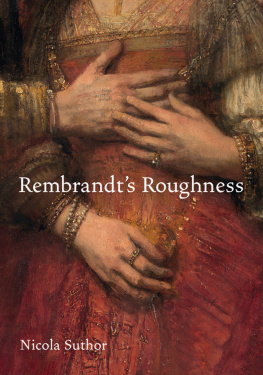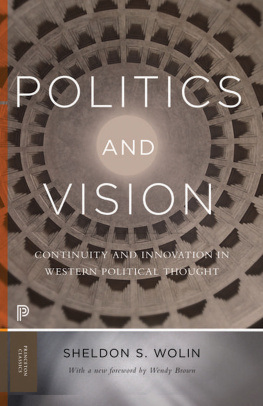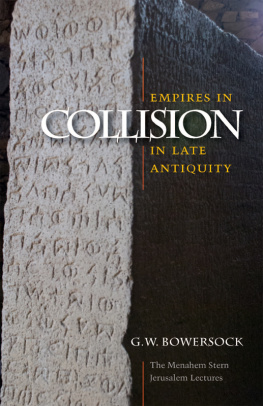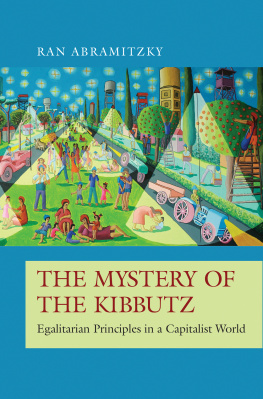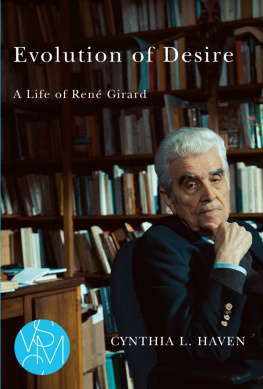Project Muse. - Rembrandts Roughness
Here you can read online Project Muse. - Rembrandts Roughness full text of the book (entire story) in english for free. Download pdf and epub, get meaning, cover and reviews about this ebook. City: Princeton University Press, year: 2018, publisher: Princeton University Press, genre: Detective and thriller. Description of the work, (preface) as well as reviews are available. Best literature library LitArk.com created for fans of good reading and offers a wide selection of genres:
Romance novel
Science fiction
Adventure
Detective
Science
History
Home and family
Prose
Art
Politics
Computer
Non-fiction
Religion
Business
Children
Humor
Choose a favorite category and find really read worthwhile books. Enjoy immersion in the world of imagination, feel the emotions of the characters or learn something new for yourself, make an fascinating discovery.
- Book:Rembrandts Roughness
- Author:
- Publisher:Princeton University Press
- Genre:
- Year:2018
- City:Princeton University Press
- Rating:5 / 5
- Favourites:Add to favourites
- Your mark:
- 100
- 1
- 2
- 3
- 4
- 5
Rembrandts Roughness: summary, description and annotation
We offer to read an annotation, description, summary or preface (depends on what the author of the book "Rembrandts Roughness" wrote himself). If you haven't found the necessary information about the book — write in the comments, we will try to find it.
Rembrandts Roughness — read online for free the complete book (whole text) full work
Below is the text of the book, divided by pages. System saving the place of the last page read, allows you to conveniently read the book "Rembrandts Roughness" online for free, without having to search again every time where you left off. Put a bookmark, and you can go to the page where you finished reading at any time.
Font size:
Interval:
Bookmark:

Rembrandts Roughness
Rembrandts Roughness
Nicola Suthor
Princeton University Press Princeton and Oxford

Every science of observation, and in particular that which is concerned with the movements and the creations of the human mind, is, in the strictest sense of the term, essentially phenomenological. And because of this, the opportunity is given us of grasping authentic spiritual values.
Henri Focillon, The Life of Forms in Art
Copyright 2018 by Princeton University Press
Published by
Princeton University Press,
41 William Street,
Princeton, New Jersey 08540
In the United Kingdom:
Princeton University Press,
6 Oxford Street,
Woodstock, Oxfordshire OX20 1TR
press.princeton.edu
Jacket art (front): Rembrandt van Rijn, Detail from
Rebecca and Isaac, 1662. Oil on canvas. 121.5 166.5 cm.
Rijksmuseum, Amsterdam.
Jacket art (back): Rembrandt, The Militia Company of
District II under the Command of Captain Frans
Banning Cocq, 1642. Oil on canvas. 379.5 cm 453.5 cm.
Rijksmuseum, Amsterdam.
Frontispiece: detail of
Chapter opening illustrations:
All Rights Reserved
ISBN 978-0-691-17244-6
Library of Congress Control Number: 2017960543
British Library Cataloging-in-Publication Data is available
Designed by Jena Sher Graphic Design
This book has been composed in Vendetta,
EideticNeo, and Berthold Akzidenz Grotesk
Printed on acid-free paper.
Printed in the Czech Republic
10 9 8 7 6 5 4 3 2 1
Contents
Introduction
8
The Painters Intention
16
Clair-Obscure I: Shadow Play
34
Deepened Insight: On the Visibility of Rembrandts Imprimatura
92
Clair-Obscure II: Light Play
126
The Color Red as Visionary Space
158
Signing Off
178
Introduction
This book is dedicated to an idiosyncratic aspect of Rembrandt van Rijns style: the rough facture as graspable in the handling of the paint and surface texture that was often dismissed as a sign of the unfinished quality of his work. This roughness not only characterizes the originality of his art in its paradoxical approach to painterly mimesis but also engenders a new aesthetic perception of imitative depiction and painting in general. In the art-historical literature on Rembrandt, especially in recent years, this visually engaging, or phenomenological, quality has been examined predominantly on the basis of technical analyses of his paintings. Such research has proven insightful and has helped to better define the characteristics of Rembrandts hand at work, as well as to distinguish it from the hands of his students and followers. My interpretations will move beyond a scientific approach by exploring Rembrandts paint as medium rather than material in an attempt to improve our understanding of the artists mind, which is similarly at work in his art. Rembrandt endows color with an agency that goes beyond the basic function of painterly mimesis, and it is this potential that was consciously recognized and sharply criticized by his contemporaries. The detailed analyses presented here will explore the different ways by which the rough structure of the medium subtly, and even subliminally, captures and engages the imagination of the beholder. This systematic approach of thorough examination proceeds according to the phenomenological understanding that the image as visual object is not a self-evident given but emerges in the process of perceptiona process that the act of description takes into account and attempts to render cognizable. Each visual evaluation is accompanied by observations from art literature that have to some extent already described the phenomenological features anchoring my concept of roughness. The synthesis of personal observations with those of others is intended to refashion subjective experience into intersubjectively valid assertions and reinforce description as epistemic practice.
If we first seek to understand the mentality of Rembrandt by reading the various biographical anecdotes and legends that have come down to us, we gain the impression of a rather uncouth and rebellious personality. There is, for example, in But instead of painting over the monkeys likeness to please his patron and sell the portrait, Rembrandt chose to leave the work unfinished and ended up keeping it himself.
It is not impossible that Rembrandt could have behaved in such a disrespectful manner toward clients of higher social status. Many biographical anecdotes in seventeenth-century art literature suggest he placed little value on interactions with elite society; coming from modest circumstances himself, he preferred to associate with ordinary people. As Houbraken informs us, when asked about his lack of social ambition, Rembrandt responded, Because I want to keep my spirit unfettered, I seek freedom, not honor.
Houbrakens story of the artists dead pet incorporated into a commissioned family portrait is not mentioned in any other source and may well be apocryphal, for we find no other references to a monkey in the Rembrandt household. Still, it is an apt illustration of the painters free spirit. Instead of acceding to his client, he satisfies his personal need to have a memento of his pet, and by doing so disrupts the conventional family portrait demanded of him on two different levels: the inclusion of a dead animal compromises the clients desire for a memorial image that will preserve the vital essence of those depicted, and at the same time, their dignity is diminished by the dead monkey as a disgusting prop. When we recall that monkeys symbolized the slavish artistic imitation of nature, then the provocation becomes perfectly clear: imitation (the dead monkey) is thematically present in a representative image (the family). The nonliving bodys nullity (not only the nullity of the monkeys body but, as we shall see, also of the paints body, which with De Piless term raboteux can be understood as a type of friction) is an intrusive and unsettling aspect of the artwork.
Samuel van Hoogstraten, Houbrakens teacher and a student of Rembrandt, published his Inleyding tot de hooge schoole der schilderkonst: anders de zichtbaere werelt (Introduction to the Academy of Painting: Otherwise Known as the Visible World) in Rotterdam in 1678. He observes that every painting bears the characteristic mark of its creator, and that such signifying particularities tend to manifest not as perfect artistic renderings (volkomene vasticheden der konst)
Van Hoogstratens general assertion that malformations are recognized as the artists unique imprint has especially proven true over the centuries in regard to the reception of Rembrandts work.
Rembrandts raboteux facture is often attributed to his lack of culture and disdained as a sign of his inability to follow the academic canon of art.
Thus in the field of rhetoric, roughness characterizes speech that is true because it is unadorned. In the unpolished formulation arising from the struggle with a unique thought, expression is achieved by disrupting ordinary, standard ways of speaking.
Roughness is usually considered unpleasant. It creates a direct physical response in those who come into contact with it. Roland Barthes, in his essay The Grain of the Voice, which compares the vocal quality of two different types of singers, describes the aspect of roughness (grain) as a manifestation of the materiality of the body.
Next pageFont size:
Interval:
Bookmark:
Similar books «Rembrandts Roughness»
Look at similar books to Rembrandts Roughness. We have selected literature similar in name and meaning in the hope of providing readers with more options to find new, interesting, not yet read works.
Discussion, reviews of the book Rembrandts Roughness and just readers' own opinions. Leave your comments, write what you think about the work, its meaning or the main characters. Specify what exactly you liked and what you didn't like, and why you think so.

